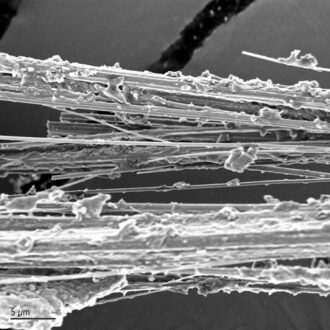What is mould?
Certifications
of Epoch Analytical Inc.
EPOCH is accredited with the US National Voluntary Laboratory Accreditation Program (NVLAP) for bulk asbestos sample analysis under NVLAP Code 200746-0.
EPOCH is accredited with the Canadian Association for Laboratory Accreditation Inc. (CALA) for airborne fiber analysis (Membership No. 3533).
1. What is Mould?
1. What is mould?
Moulds are fungi, a group of very common organisms that also includes mushrooms and yeasts. Moulds are generally found in nature and are carried indoors from the outside. More than 270 species of mould have been identified in Canadian homes.
Moulds can grow indoors in wet or damp areas, including wallpaper, ceiling tiles, carpets (especially those with jute backing), insulation material, wood and drywall.

stachybotrys chartarum spores
2. What are the health effects of mould?
2. What are the health effects of mould?
Most common types of moulds are generally not harmful to healthy individuals. However, exposure to mould can cause reactions depending on overall health, age and the amount of time an exposed person spends in the home.
The elderly, pregnant women, infants and young children, people with allergies, chronic respiratory illness and/or chemical sensitivities and those with weakened immune systems are most likely to experience health effects from mould.
The most common health problems associated with exposure to mould are:
- Eye, nose and throat irritation
- Runny nose, sinus congestion, frequent cold symptoms
- Increased asthma attacks
- Allergic reactions
Anyone experiencing any of these symptoms should consult a physician.
3. How can I prevent mould from growing in my home?
3. How can I prevent mould from growing in my home?
Control humidity
- Avoid excessively high and prolonged humidity/dampness in the home.
- Limit the use of humidifiers. When using a humidifier, follow the manufacturer’s maintenance instructions.
- Limit the number of fish tanks and indoor plants as these can raise the humidity level in your home.
Proper ventilation
- Turn on exhaust fans, particularly when bathing, showering, cooking and doing laundry.
- Open windows when weather permits.
Control moisture
- Repair all leaks and plumbing problems.
- Thoroughly clean and dry water-damaged carpets and building materials. Discard material that cannot be cleaned and properly dried.

4. What should I do if I have mould?
4. What should I do if I have mould?
Please contact trusted and qualified professionals, Epoch Environmental Consulting, if you would like more information on mold assessments and site inspections.
Please refer to Health Canada’s recommendation below:
5. How do I submit a sample for mould testing?
5. How do I submit a sample for mould testing?
How to Collect Samples and Test for Mold or Bacteria
Laboratory results are as good as the sample. The sample type taken generally depends on the purpose of the investigation. The importance of accurate results cannot be overstated. Test results change people’s lives.
Tip. Collecting a good sample for lab testing. There’s not much point using a lab analysis report to guide your microbial remediation decisions or recommendations unless the sample collected for analysis was truly representative of the total building contamination. The aim should always be to collect the most representative sample possible. See our course How To Take Mold Samples.
In this first section, you will learn how to safely collect and send samples for mold testing services:
- Cut 2-3 inches of clear scotch tape; avoid touching the sticky side by holding the piece of tape by the edges.
- Press the tape gently onto the surface you wish to test for mold growth.
- Peel the tape off surface holding the tape by the edges only.
- Apply sticky side of tape to the inside of the ziplock bag; do not fold the tape.
- Close bag and label the sample appropriately (put only one sample per bag).
- Fill the chain of custody form and send it together with the samples to us.
How To Collect Bulk Samples for Mold Testing:
- Wear suitable gloves.
- Cut a small piece (about 4 square inches) of the suspect material (e.g., carpet, drywall, wallpaper, wood); taking care not to disturb the mold.
- Place the sample inside a clean plastic bag (for example ziplock).
- Close the bag and label the sample appropriately.
- Fill the chain of custody form and send it together with the samples to us.
How To Collect Swab Samples for Mold or Bacteria Testing:
Dry swabs are recommended for wet surfaces and wet swabs for dry surfaces.
- Wear suitable gloves.
- Remove swab from tube (If using swabs with a wetting agent, drain most of it on the sides of the tube before sampling).
- Swab the test surface by rolling the swab lightly back and forth. For quantification of the amount of mold or bacteria on the test surface, swab a known surface area (for example, 100 square centimeters).
- After swabbing, insert the swab in the tube – Firmly close cap and label the sample appropriately.
- Fill the chain of custody form and send it together with the samples to us.
Larger areas
Areas of mould larger than three patches (each patch more than 3 feet by 3 feet in size) should be cleaned by professionals.
In all cases, the underlying cause of water accumulation or prolonged high humidity must be corrected or mould will continue to grow or reoccur. Regularly inspect your home for signs of moisture problems or water damage (musty odours, condensation, and discoloration).
6. What are the common mould types found in buildings and homes?
6. What are the common mould types found in buildings and homes?
Moulds (also spelled “ moulds ”) are simple, microscopic organisms that can grow virtually anywhere, both inside buildings and outdoors. Mould colonies can grow inside damp or wet building structures. And mould spores are a common component of household and workplace dust.
Here are common types of mould found in homes and businesses:
- Absidia
- Acremonium
- Alternaria
- Aspergillus
- Aureobasidium
- Chaetomium
- Chrysonilia
- Cladosporium
- Curvularia
- Emericella
- Epicoccum
- Eurotium
- Fusarium
- Geomyces
- Geotrichum
- Gliocladium
- Gliomastix
- Memnoniella
- Mucor
- Myrothecium
- Oidiodendron
- Paecilomyces
- Penicillium
- Phialophora
- Phoma
- Scopulariopsis
- Sistotrema
- Stachybotrys
- Trichoderma
- Ulocladium
- Wallemia
Who are mould classified by risk?
In some countries indoor fungi have been grouped into 3 hazard classes based on associated health risk. These classes are similar to risk groups assigned to microorganisms handled in laboratory environments.
- Hazard Class A: includes fungi or their metabolic products that are highly hazardous to health. These fungi or metabolites should not be present in occupied dwellings. Presence of these fungi in occupied buildings requires immediate attention.
- Hazard Class B: includes those fungi which may cause allergic reactions to occupants if present indoors over a long period.
- Hazard Class C: includes fungi not known to be a hazard to health. Growth of these fungi indoors, however, may cause economic damage and therefore should not be allowed.
Molds commonly found in kitchens and bathrooms:
- Cladosporium cladosporioides (hazard class B)
- Cladosporium sphaerospermum (hazard class C)
- Ulocladium botrytis (hazard class C)
- Chaetomium globosum (hazard class C)
- spergillus fumigatus (hazard class A)
Molds commonly found on wallpapers:
- Cladosporium sphaerospermum
- Chaetomium spp., particularly Chaetomium globosum
- Doratomyces spp (no information on hazard classification)
- Fusarium spp (hazard class A)
- sStachybotrys chartarum, commonly called “ black mold ” (hazard class A)
- Trichoderma spp (hazard class B)
- Scopulariopsis spp (hazard class B)
Molds commonly found on mattresses and carpets:
- Penicillium spp., especially Penicillium chrysogenum (hazard class B) and Penicillium aurantiogriseum (hazard class B)
- Aspergillus versicolor (hazard class A)
- Aureobasidium pullulans (hazard class B)
- Aspergillus repens (no information on hazard classification)
- Wallemia sebi (hazard class C)
- Chaetomium spp., particularly Chaetomium globosum
- Scopulariopsis spp.
Molds commonly found on window frames:
- Aureobasidium pullulans
- Cladosporium sphaerospermum
- Ulocladium spp.
MMolds commonly found in basement (cellars):
- Aspergillus versicolor
- Aspergillus fumigatus
- Fusarium spp.
Molds commonly found in flower pot soil:
- Aspergillus fumigatus
- Aspergillus niger (hazard class A)
- Aspergillus flavus (hazard class A)
Source: Mould and Bacteria Consulting Laboratories (2019)
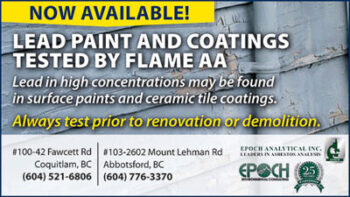
Lead (Pb) Detection by Flame Atomic Absorption Spectroscopy (FAA) NISOH 7082
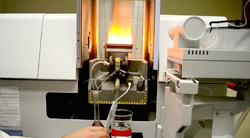
Epoch Analytical is pleased to now offer lead analysis of paints and coatings using a Flame Atomic Absorption Spectrometer. FAA analyzes lead content according to modified EPA 7000B and test method NIOSH 7082.
Using Flame AA Spectroscopy, a small quantity of sample is homogenized and microwave digested using nitric acid. The lead concentration sample is accurately determined in PPM (parts per million) using the reading from the Flame AA spectrometer following microwave digestion and dilution of a small quantity of the original sample. Please submit a sample that is no smaller than 2″x 2″ size or a minimum 100 grams in weight.
The technique is based on the principle that ground state metals absorb light at a specific wavelength. Metal ions in a solution are converted to atomic state by means of a flame. The main advantages of Flame AA include the output of highly reliable analytical results while maintaining a fast turnaround time.
To quantitatively determine the lead (Pb) content in paint and coatings, NIOSH 7082 is used. Paints chips are decomposed using mineral acids, and prepare appropriate dilutions. and measure these paint samples by aspirating them into an air-acetylene flame for atomic absorption measurement using NIOSH 7082.
Flame analysis is suitable for most analytes and matrices including paint, wipes, soils and air samples and results are reported in PPM or %. For ceramic tiles, the glazing or surface coating of the tile is analyzed for lead content using XRF Analysis.
The Limit of Detection (LOD): approx. 40 ppm or 40 mg/kg based on a 0.25g sample weight. Please submit a sample that is no smaller than 2″x 2″ in size or minimum 100 grams in weight.
Bulk Sample Asbestos Identification using EPA600/R93/116
Bulk Sample Asbestos Identification using EPA600/R93/116
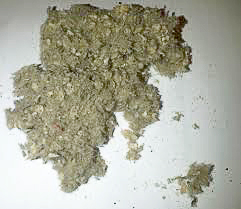
Blown Insulation
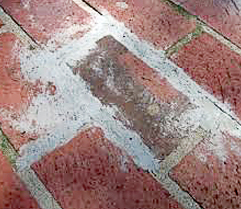
Brick Mortar
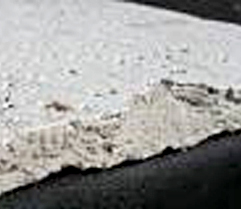
Ceiling-Tile
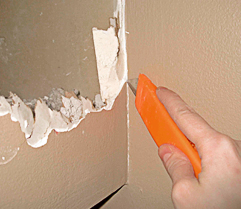
Drywall Joint Compound

Linoleum or Vinylsheet

Paper Tape
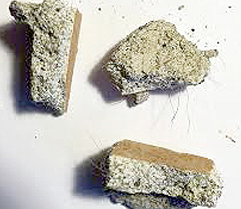
Plaster
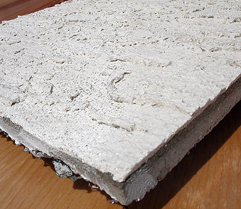
Exterior Stucco
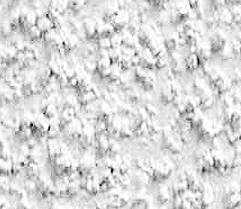
Texture Coat
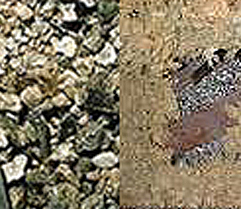
Vermiculite & Blown Insulation
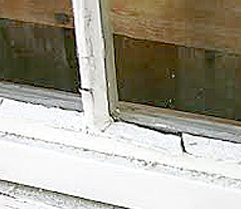
Window Putty
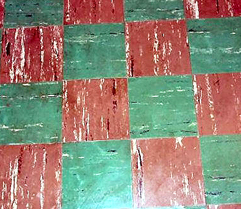
Vinyl Floor Tile
Bulk Asbestos Identification using Polarized Light Microscopy (PLM) in accordance to EPA/600/R-93/116 and EPA600/M4-82-020.
Examination of samples for asbestos content was conducted in accordance to EPA/600/R-93/116 or EPA/600/M4-82-020 methodologies using polarized light microscopy (PLM). This method is the most widely used method for estimating asbestos in bulk building materials and works well for most sample types.
Multiple layers of samples are analyzed and reported separately. All analysts are derived from calibrated visual estimate and measured in weight percent unless otherwise noted. Please note that the EPA test method has limitation for quantifying the percentage of samples with low asbestos concentration.
Transmission electron microscopy (TEM) would be encouraged for customers to obtain accurate results in these situations.
Using Stereoscopic Evaluation
All samples are analyzed first through stereo binocular examination. By magnifying a bulk sample at up to 40x, the analyst is able to evaluate and extract suspicious fibres that possess the morphological characteristics of asbestos. From there, fibres are mounted on a slide with a refractive index oil and then analyzed with the Polarized Light Microscope (PLM).

Using Polarized Light Microscopy (PLM)
Polarized light microscopy (PLM) analysis is the most commonly accepted technique for analysing bulk samples for asbestos. Identification of asbestos is based on the determination of optical properties displayed when the sample is treated with various dispersion staining liquids. Identification is further substantiated by fibre morphology and the effect of polarized light on the fibres. PLM analysis is specific to fibrous materials and allows for the determination of:
There are 6 types of Asbestos
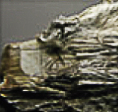
Chrysotile
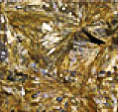
Amosite
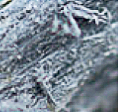
Crocidolite

Tremolite
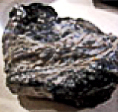
Anthophyllite
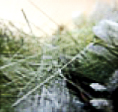
Actinolite
Asbestos Type: There are six (6) types (Chrysotile, Amosite, Actinolite, Tremolite, Crocidolite Anthophylite);
Quantification: % amount of asbestos and non-asbestos fibers in the sample quantified by Calibrated Visual Estimate of the analyst;
Fiber Colour under microscopic evaluation;
None Detected : Means No Asbestos Present in sample
Airborne Asbestos Fiber Counting using Phase Contrast Microscopy (PCM) in accordance to NIOSH 7400
Airborne Asbestos Fiber Counting using Phase Contrast Microscopy (PCM) in accordance to NIOSH 7400
In testing for asbestos, air is drawn through a filter. This filter is usually a part of a 25-mm cassette that can take specific sampling times. The sampling time is chosen to produce a fiber density of between 100 to 1,300 fibers/mm2; this rate is usually 0.5 to 16.0 liters/minute. The filter is then analyzed by phase contrast microscopy (PCM) or transmission electron microscopy (TEM). Fibre counting analysis is conducted in accordance to The National Institute for Occupational Safety and Health (NIOSH) Method #7400.

Enlarged Asbestos Fibers
The National Institute of Occupational Safety and Health (NIOSH) method 7400
The analysis includes testing of air sample for asbestos and other fibers by PCM. It is used primarily for estimating asbestos concentrations in air. The method does not differentiate between asbestos and other fibers and can also be used to estimate the airborne concentration of other, non-asbestos materials such as fibrous glass. Fibre less than 0.25 microns in diameter will not be detected with this method.

The National Institute of Occupational Safety and Health (NIOSH) method 7402
NIOSH 7402 is fibre specific and can be utilized to complement the phase contrast microscopy method 7400. It can determine the fraction of asbestos fibres among all optically visible fibres within a given sample. The results can be used to calculate a modified PCM fibre count.
PCM works well for testing airborne fibers because it is relatively inexpensive and quick. However, PCM does not differentiate between asbestos and other fibers. All fibers that meet the counting criteria are counted. Transmission Electron Microscopy (TEM) is encouraged for customers to obtain more accurate results where precise determination of airborne asbestos fiber is needed.
Gravimetric 400 and 1000 Point Count for Bulk Asbestos
Gravimetric 400 and 1000 Point Count for Bulk Asbestos
Gravimetric point counting is a technique that enhances quantification of asbestos in bulk building materials.The sample is first dried and then weighed. It is then subjected to high temperature in an ashing furnace for a period of approximately 6 hours. During this process organic material is oxidized (burned). After cooling the sample is re-weighed and the weight loss recorded.
Further treatment with dilute hydrochloric acid may be used to remove carbonates and other acid soluble substances in the sample. The remaining material is then washed with plain water, dried and weighed. This weight loss is also recorded. The residue is now examined and PLM point counting is performed to determine the concentration of asbestos fibers in the residue. Because we know the weight of the residue we can calculate the concentration of asbestos in the original sample.
Gravimetric point count improves the ability to detect asbestos fibers in the sample and also improves the quantification. This is so because the residue is very often granular particulates rather than a wide variety of materials with vastly different density and mass thereby making more representative slides and improving point counting statistics.
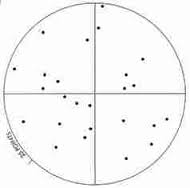
Point counting does not apply to the EPA vermiculite method.
The Asbestos 400 Point Count reporting limit is <0.25% and Asbestos 1000 Point Count reporting limit is <0.1%.
Vermiculite Research Method by PLM using EPA600/ R-04/004
Vermiculite Research Method by PLM using EPA600/ R-04/004
Vermiculite is a mineral which was commonly used as insulation in buildings, amongst other commercial and consumer products. While not all vermiculite may contain asbestos fibers, it is reasonable to assume that older vermiculite insulation should be analyzed by an accredited asbestos laboratory. WorkSafeBC recommends that the Vermiculite Research Method, EPA/600/R04-004, otherwise known as the “Cincinnati Method”, be utilized. Regular analysis by Polarized Light Microscopy (PLM) using EPA/600/R93/116 may not be adequate to detect asbestos amphiboles from an insufficient sample size to determine the presence or absence of asbestos, the Cincinnati Method is more precise and accurate due to a two-step extraction process using water to separate the amphibole asbestos fibers.
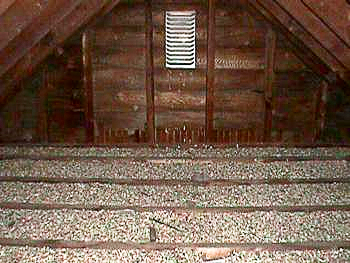
If NO asbestos amphiboles are detected in the fractions, Transmission Electron Microscope (TEM) is the final step of analysis to confirm the presence or absence of asbestos. Any % amount of asbestos detected in vermiculite, is considered an Asbestos Containing Materials (ACM) according to WorkSafeBC. Please submit at least 4 gallons or a full 6″x7″ zip lock large freezer bag of vermiculite for analysis – an insufficient quantity of vermiculite may be rejected and will delay analysis.
Lead Detection in Paints and Coatings
Lead Detection in Paints and Coatings
Until the 1980s, lead was used in paint because of its increased durability, ability to make colours more vibrant, and help paint dry faster. Lead-containing paints and coatings do not present a hazard if they are left intact. The health risk occurs when the paint chips, peels or is otherwise damaged and lead dust, mist or fumes are released into the work environment. Inhalation and ingestion of lead in the smallest of quantities, particularly by children, can be deadly.
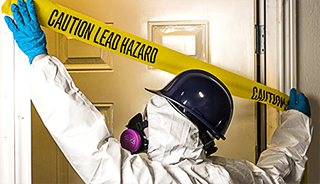
Please be aware WorkSafeBC does not numerically define what would be considered a Lead containing or lead based paint or coating. The lead content of paint must be determined as part of the risk assessment by a qualified professional. Please submit a sample that is no smaller than 3″x 3″ in size in a zip lock bag. coatings” For ceramic tiles, the glazing or surface coating of the tile is analyzed for lead content.
Please be aware WorkSafeBC does not numerically define what would be considered a lead containing or a lead based paint or coating. Any amount of lead in a material may pose an exposure risk to workers when the material is disturbed, depending on the method. Any risk assessment should include the presence of high risk individuals, especially pregnant women and children, within the workplace.
For more information about lead exposure and recommendations on providing suitable safe work procedures, please refer to the WorkSafeBC publication, Safe Work Practises for Handling Lead (2017).
At Epoch Analytical Inc we can test lead content in Paints and Coatings using two different methods.
Lead (Pb) Detection by Open Beam X-Ray Fluorescence (XRF) Analysis
Lead (Pb) Detection by Open Beam X-Ray Fluorescence (XRF) Analysis
EPOCH uses Open Beam X-Ray Fluorescence (XRF) technology to conduct our lead testing methods as a fast (immediate), non-destructive technique of testing for lead in surface paints and coatings. The XRF analyzer measures the amount of lead in paint and other surface coating by exposing a painted or coated surface to X-rays or gamma radiation, which then causes any lead present to emit energy with a certain frequency.

The results from XRF analysis can be reported in either volume as ppm (parts per million) or surface area as mg/cm2. Please submit a bulk sample of paint that is at least 2-3 inches in surface area. Lead surface wipes can also be analyzed by XRF. Please be sure to
The limit of detection (LOD) using XRF for volume is approximately < 20 ppm or mg/kg.
Our technicians are certified XRF analyzer operators and have acquired a Level 1 X-ray Fluorescence Analyzer Operator Certificate issued by the Natural Resources Canada (NRCan).
Lead (Pb) Detection by Flame Atomic Absorption Spectroscopy (FAA) NISOH 7082
Lead (Pb) Detection by Flame Atomic Absorption Spectroscopy (FAA) NISOH 7082

Epoch Analytical is pleased to now offer lead analysis of paints and coatings using a Flame Atomic Absorption Spectrometer. FAA analyzes lead content according to modified EPA 7000B and test method NIOSH 7082.
Using Flame AA Spectroscopy, a small quantity of sample is homogenized and microwave digested using nitric acid. The lead concentration sample is accurately determined in PPM (parts per million) using the reading from the Flame AA spectrometer following microwave digestion and dilution of a small quantity of the original sample. Please submit a sample that is no smaller than 2″x 2″ size or a minimum 100 grams in weight.
The technique is based on the principle that ground state metals absorb light at a specific wavelength. Metal ions in a solution are converted to atomic state by means of a flame. The main advantages of Flame AA include the output of highly reliable analytical results while maintaining a fast turnaround time.
To quantitatively determine the lead (Pb) content in paint and coatings, NIOSH 7082 is used. Paints chips are decomposed using mineral acids, and prepare appropriate dilutions. and measure these paint samples by aspirating them into an air-acetylene flame for atomic absorption measurement using NIOSH 7082.
Flame analysis is suitable for most analytes and matrices including paint, wipes, soils and air samples and results are reported in PPM or %. For ceramic tiles, the glazing or surface coating of the tile is analyzed for lead content using XRF Analysis.
The Limit of Detection (LOD): approx. 40 ppm or 40 mg/kg based on a 0.25g sample weight. Please submit a sample that is no smaller than 2″x 2″ in size or minimum 100 grams in weight.
Mold and Bacteria Analysis
Mold and Bacteria Analysis
Accurate identification of molds is important. It helps alleviate unnecessary concern and aids in decision-making.
Suitable samples for mold testing include:
• Pieces of material with signs of mold.
• Tape lift or swab samples taken from surfaces suspected of mold.
• Air samples: These include non-viable and viable samples.
Mold testing involves analysis of samples collected from residential and commercial properties. Samples for mold testing include air for either viable or non-viable analysis and surface samples such as swabs, bulk (pieces of material, dust or liquids), tape lift, and contact plates.
Direct Microscopic Examination (DME) is using x400, x600, or x1000 magnification as necessary.
Culture and quantification is also available. Mold and Bacteria Analysis is conducted by trained microbiologists from an accredited laboratory.
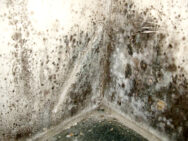
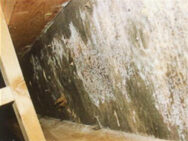

Transmission Electron Microscopy (TEM)
Transmission Electron Microscopy (TEM)
What you can see with a light microscope is limited by the wavelength of light. TEM uses electrons as a “light source” and their much lower wave length makes it possible to get a resolution at A higher magnification (up to 20,000x and higher) and identifies asbestos fibers by morphology, crystalline structure and elemental analysis.
As there are no TEM laboratories in western Canada, Epoch Analytical will facilitate and coordinate the sending of samples to an accredited laboratory for TEM analysis.

